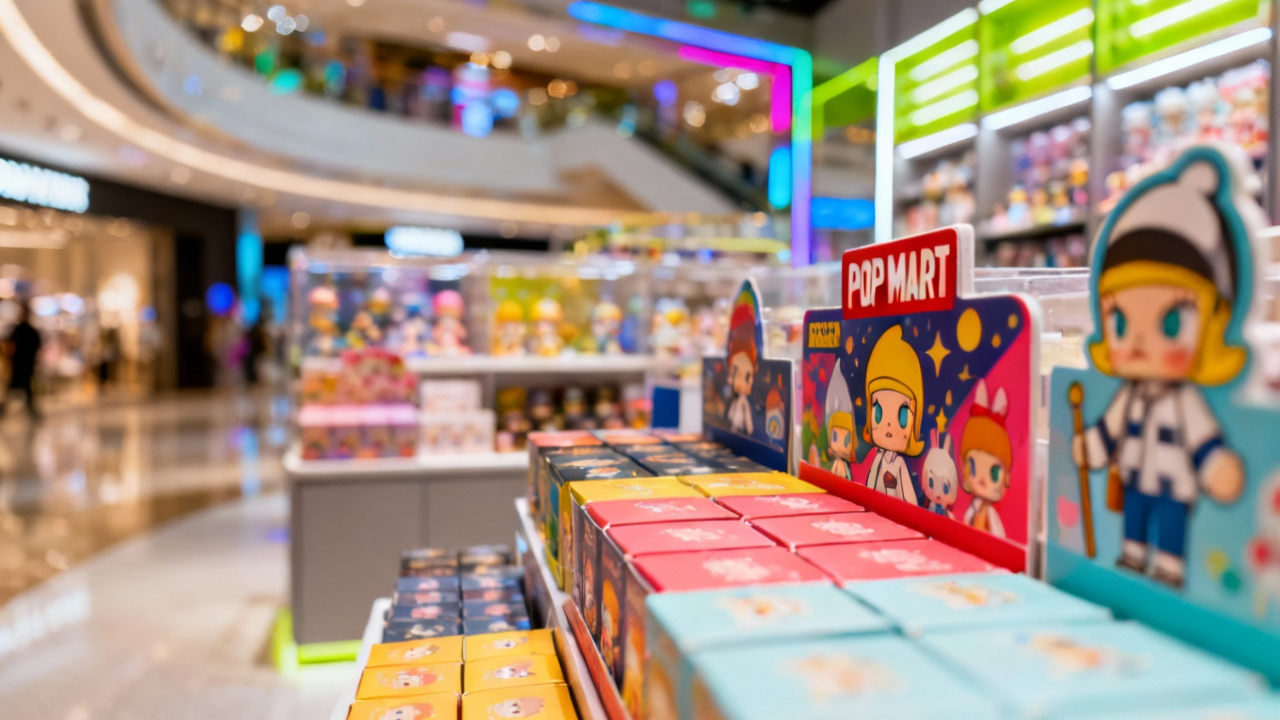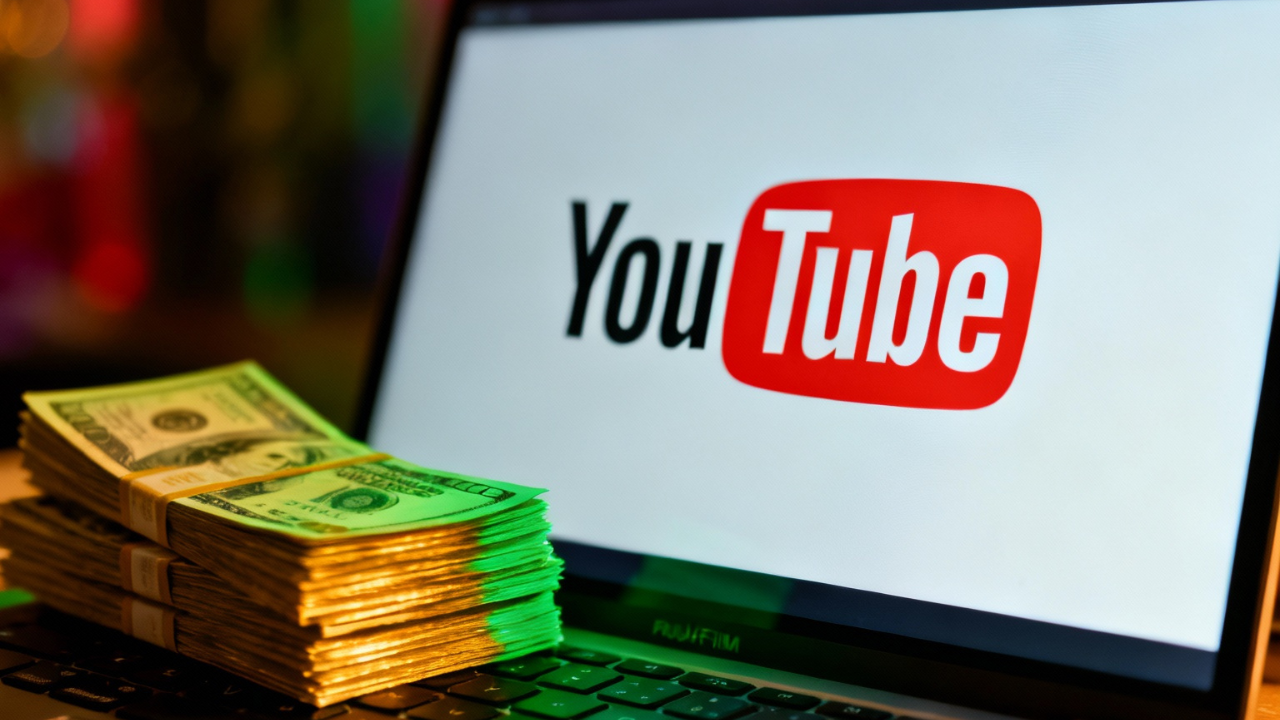
How POP MART Wins the Market: The Secret Behind the Blind Box Craze
When Toys Become a Lifestyle
What if a toy wasn’t just a toy—but a fashion statement, a social media trend, and even a collectible investment? That’s the story of POP MART, the Chinese collectible-toy giant that turned “blind box” toys into a global phenomenon.
Since its founding in 2010 in Beijing, POP MART has grown from a small designer-toy retailer into a worldwide lifestyle brand. Today, you’ll spot its adorable characters in malls, on Instagram, and even at live-streaming events from Singapore to New York. But how exactly did a toy brand capture the hearts—and wallets—of millions of Gen Z and Millennials? And more importantly, what can marketers and brands learn from its rise?
Let’s unpack the strategy that made POP MART not just a toy brand, but a marketing masterclass.
What Is POP MART?

POP MART is a collectible toy brand from Beijing, China, founded by Wang Ning in 2010. Its flagship products are blind boxes—sealed packages that hide which figure you’re getting until you open it. From its first hit character “Molly,” to newer icons like “Labubu,” “Dimoo,” and “Skullpanda,” POP MART has turned quirky, cute, and artist-designed characters into a global obsession.
What makes it unique isn’t just the art—it’s the experience. Each box promises surprise, suspense, and a thrill of discovery. Fans chase rare editions, trade duplicates, and proudly showcase their collections online. It’s not an exaggeration to say that POP MART transformed collecting toys into a lifestyle movement.
Who Is POP MART’s Target Market?
Though you might assume toys are for kids, POP MART’s real fans are young adults—specifically Gen Z and Millennials.
These audiences are:
- Digitally native, spending hours on TikTok, Instagram, and WeChat.
- Nostalgic and expressive, seeking items that reflect personality and mood.
- Socially driven, eager to share experiences and aesthetics online.
- Collectors at heart, loving the thrill of completing a set or chasing a rare piece.
This group—sometimes dubbed “kidults”—spends on hobbies and collectibles as a form of self-expression. POP MART perfectly taps into that emotional space where play meets art, and shopping meets community.
Why POP MART Has Become So Popular
POP MART’s success isn’t an accident—it’s built on smart branding, clever psychology, and seamless integration between online and offline experiences. Let’s break it down.
1. Irresistible Designs and Artistic Collaborations
Every POP MART figure is cute, distinctive, and instantly recognizable. Their lineup spans dreamy fairies, mischievous monsters, and fashionable characters designed by artists like Kasing Lung (Labubu) and Kenny Wong (Molly).
These designs aren’t mass-market cartoon characters—they’re designer toys with storylines and personalities. POP MART has mastered the art of blending collectible design with emotional storytelling.
Plus, the brand collaborates with global franchises and artists, from Disney and Sanrio to Japanese and Western designers, making its collections culturally diverse and endlessly fresh.
2. The Blind Box: Surprise That Sells
POP MART’s greatest marketing weapon? Unpredictability.
The blind box model means you never know which figure you’ll get until you open it. Each collection usually includes one or two rare figures—known as “secrets.” The odds of finding one are often as low as 1 in 144 boxes.
That tiny chance creates repeat purchases, FOMO, and community interaction:
- Fans buy multiple boxes to “hunt” for the rare figure.
- They film unboxing videos to share the excitement online.
- They trade duplicates with other fans—sometimes even at POP MART’s own events or app.
It’s gamified marketing in its purest form—collecting, sharing, and playing all rolled into one.
3. Affordable Luxury for the Young Generation
POP MART nailed its pricing strategy.
Each blind box costs about SGD 13–16, making it accessible enough for impulse purchases but premium enough to feel special. Meanwhile, larger figurines or limited editions can cost hundreds of dollars, appealing to serious collectors.
This tiered pricing lets POP MART attract both casual shoppers and die-hard fans—an effective way to grow community and revenue at once.
4. Multi-Channel Availability
POP MART is everywhere.
You can buy its products:
- In retail stores—their pink, aesthetic outlets have become photo-worthy destinations.
- From vending machines—called “Robo Shops,” located in malls and airports.
- Online—on their website, app, Shopee, Lazada, and more.
By offering multiple touchpoints, POP MART makes purchasing easy, frequent, and fun.
This omnichannel model ensures that whether you’re scrolling at home or strolling through a mall, you can’t escape the allure of a blind box.
5. Emotional Connection and Community Culture
Beyond cute figures, POP MART sells belongings.
Its characters have distinct stories and moods—fans relate to them. The company has also created an online community app where users can share experiences, post collections, and even trade toys.
This keeps engagement alive between purchases and builds a sense of tribe identity—you’re not just buying a toy, you’re joining a global fandom.
6. Scarcity and the Power of Hype
POP MART knows that scarcity drives desire.
Each collection is limited, and once sold out, it’s gone. This strategy makes every launch a mini-event, complete with countdowns, teaser videos, and live sales.
Collectors line up in malls or wait online for restocks, while resale prices for rare figures can skyrocket. In the U.S., for example, a rare Labubu figure has fetched over USD 1,000 on eBay.
POP MART’s Digital Marketing Strategy
POP MART’s success wouldn’t be possible without digital marketing. The brand’s online presence is a case study in how to connect with Gen Z and Millennials through the right mix of platforms, content, and community.
1. Social Media Mastery: TikTok, WeChat, Instagram
POP MART understands where its audience lives.
It uses:
- WeChat for China’s massive market—running pre-launch campaigns, mini-games, and giveaways.
- TikTok and Instagram globally—for teaser videos, influencer collabs, and fan reposts.
Based on the survey by a Shanghai College Student in 2024 International Conference on Education, Management, Economic, and Social Sciences, 51% of Pop Mart fans know the brand from social media. Their posts often include countdowns to new drops, unboxing clips, and aesthetic close-ups of rare finds. Each platform gets tailored content based on local trends—what’s trending in China might differ from what’s trending in Singapore or the U.S.
That’s how POP MART keeps itself globally consistent, yet locally relevant.
2. Pre-Launch Teasers and “Drop Culture”
Before every collection launch, POP MART creates anticipation through teaser videos, countdowns, and limited previews. This “drop culture” is borrowed from fashion and sneaker industries—turning product launches into social events.
Fans share, speculate, and spread the word organically. By the time the collection drops, the hype is sky-high—and inventory often sells out within hours.
3. Paid Ads and Retargeting
While their social engagement looks organic, POP MART backs it with paid advertising.
They run paid social ads on TikTok, Instagram, and WeChat, targeting users interested in collectibles, anime, and pop culture. Retargeting ads re-engage anyone who visited their site or app but didn’t complete a purchase.
The result? Consistent top-of-mind awareness that converts hype into sales.
4. User-Generated Content (UGC): Turning Fans into Ambassadors
POP MART doesn’t just market to its fans—it markets with them.
Fans post videos of themselves unboxing blind boxes, screaming with joy (or mock disappointment) at what they got. POP MART often reposts this UGC, creating authenticity and emotional connection.
This approach taps into two key Gen Z motivators: participation and social proof. When fans see others having fun, they want to join in. It’s digital word-of-mouth at scale.
5. Live Shopping and Marketplaces
POP MART has also mastered live commerce, especially in Asia.
They host live-stream shopping sessions on platforms like Shopee and TikTok Live, where hosts unbox toys in real time, answer questions, and showcase new collections.
This interactive format bridges entertainment and shopping—keeping audiences glued and purchases flowing.
6. Building Their Own App and Community Hub
The POP MART App goes beyond e-commerce. It’s a dedicated fan hub where collectors can:
- Share photos of their toys.
- Connect and trade with others.
- Subscribe for regular product shipments.
This is smart retention marketing—creating a closed ecosystem where fans don’t just buy once but stay connected, active, and loyal.
POP MART’s Offline Marketing Magic

Even though POP MART dominates digital platforms, its offline presence is just as powerful.
1. Retail Stores: Experience Before Purchase
POP MART stores aren’t just for selling—they’re designed for experience.
Bright, colorful, and photogenic, these stores invite fans to snap photos, browse collections, and get lost in the world of designer toys. The setup encourages sharing—turning in-store visits into social media content.
2. Robo Shops: Vending Machines of Delight
Their vending machines—called Robo Shops—are a genius move. They’re strategically placed in malls and airports, offering instant gratification and novelty. With just a tap, fans can grab a blind box on the go.
3. Fan Events and Artist Meet-Ups
POP MART also hosts fan conventions and art events, where collectors can meet designers, attend workshops, and preview upcoming lines.These events build emotional ties, generate buzz, and turn casual fans into lifelong advocates. It’s brand building through experience, not just advertising.
What Marketers Can Learn from POP MART
For businesses—and especially digital marketers at agencies like KPI Media—POP MART’s playbook is full of lessons.
Here’s what your next campaign can borrow from them:
- Design for shareability – Make products or experiences people want to post about.
- Use scarcity and surprise – Limited drops and hidden rewards drive excitement and repeat sales.
- Blend paid and organic marketing – Use ads for reach, but let UGC fuel authenticity.
- Create community, not just customers – Build platforms where fans connect and engage.
- Localize content – Adapt visuals, tone, and promotions to each region’s culture.
- Combine online and offline experiences – Retail events and digital teasers can work hand-in-hand.
- Leverage influencers and collaborations – Partner with artists or creators who resonate with your audience.
- Data-driven storytelling – Use social listening and analytics to identify which stories, visuals, or trends drive conversions.
In short: POP MART doesn’t sell toys—it sells moments of joy, surprise, and belonging. And that’s something every brand can learn from.
Challenges Behind the Hype
Of course, every success story comes with challenges. For a balanced view, it’s worth noting a few risks POP MART faces:
- Counterfeits: The brand’s popularity has led to a surge in fake figures online.
- Market saturation: Releasing too many collections too quickly risks fatigue.
- Pricing pressure: As demand grows, some fans question rising costs.
- Regional adaptation: What works in China might not always fit Western markets.
By acknowledging these, POP MART stays transparent and adaptable—a trait every global brand should emulate.
Conclusion: POP MART’s Marketing Magic
POP MART didn’t win the market by chance.
It combined beautiful design, clever psychology, and brilliant marketing execution to build one of the most engaging consumer brands of the decade.From its TikTok teasers to its mall Robo Shops, every touchpoint feels intentional and immersive. It proves that when you blend creativity, technology, and community—you don’t just sell a product, you create a movement.
And that’s how POP MART won the market—and how other brands can, too.
KPI Media is a digital marketing agency in Singapore that focuses on hitting your KPI through digital advertising. Book your free consultation with our Chief Growth Officer (value $250).
More Blogs



Let us build your acquisition engine
Our Founder will personally propose a custom media plan to crush your KPIs.
.png)














